TEST SITE FOR ART & HOSPITALITY EXPERIENCES
The Future of Tourism: a Gift Exchanged Between Two People
24.06.2020
- #humanconnections
- #ritualsandgifts
- #futuretourism

When I visited in May, Berlin’s Gropius-Bau was nicely empty, with the museum reporting a 30% decrease in visitors due to the pandemic. Equipped with mask and hand sanitizer, I entered the grand halls which currently house Lee Mingwei’s solo exhibition. Covering nearly the whole ground floor including the massive foyer, the show is a retrospective of the Taiwanese artist’s oeuvre which also includes new and revisited works. Rituals, rites and notions of gift giving and receiving are fundamental to the artist’s approach. His projects often evolve from a simple exchange, gesture or personal experience which he conceptualizes and develops in spatial installations.
The Confucian concepts of ren and li and their interplay are essential to understanding the philosophical fundament in which Lee’s conceptual works are grounded. Ren 仁, translated as humanity or benevolence, is a key concept in Confucianism which idealizes humanity and connectedness.¹ The ways in which one enacts ren is through li, the rites and rituals of “proper conduct”.² The deep connection in Confucianist thought between ren and li, enacting human interconnectedness through ritualistic practice, lays the groundwork for Lee’s artistic approach.
“‘Do not look in a way which is not li, do not listen in a way that is not li, do not speak in a way that is not li, do not move in a way that is not li’ (Analects 12.1)”, quotes Kurtis Hagen from the foundational Confucianist text. “Confucius is suggesting that one should, in all circumstances, act with the attention and care characteristic of the performance of a sacred rite.”³
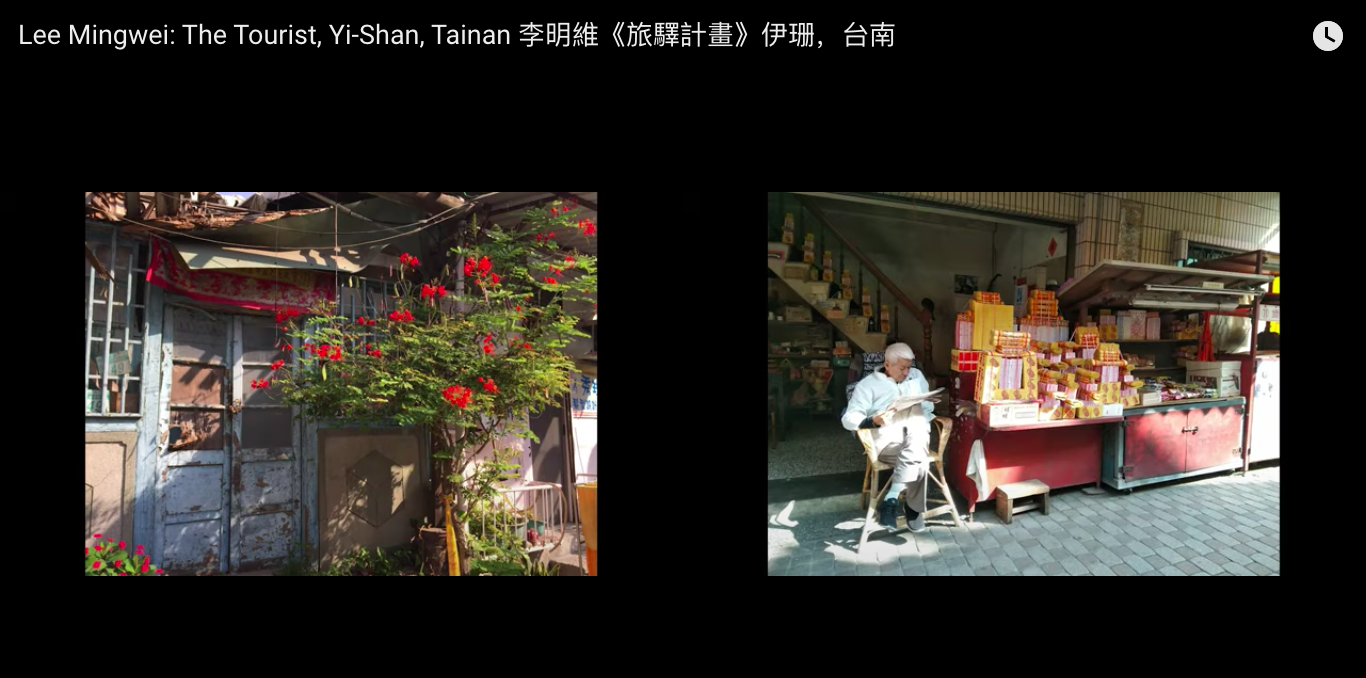
With The Tourist (2001-present), Lee engages with and reframes the ritual of tour guiding through the format of the slideshow, an antiquated presentation that in the digital age has been replaced by posts, stories and livestreams. Originally developed for the Rice University Art Gallery of Houston, the artist invited locals to perform the role of tour guide and show him a personal side of their own city. The project has since expanded to include cities all over the globe from Jakarta to Berkeley.
During each journey, the artist and his host take pictures which are then exhibited side-by-side in the installation. Besides curating the tour, the host also chooses the music to which the slideshow is played. Next to the double slideshow is an immense wooden structure, a sleek construction that houses souvenirs from each of the cities featured in the project.
The timing of the exhibition in Berlin (the opening of which was postponed by 6 weeks due to the lockdown) amidst a halted tourism economy cannot be overlooked. Prior to the crisis, tourism played a huge role in the global economy ($1.7tn in 2019)⁴ but currently faces an uncertain future. In its original context, the work breaks down the industrialization of the tourism sector and reminds us of the essence of the act itself: the shared experience between two people coming from two distinct places, cultures and/or situated references. Now, it asks us to reflect on that essence and use it to recalibrate and reimagine the sector’s future.
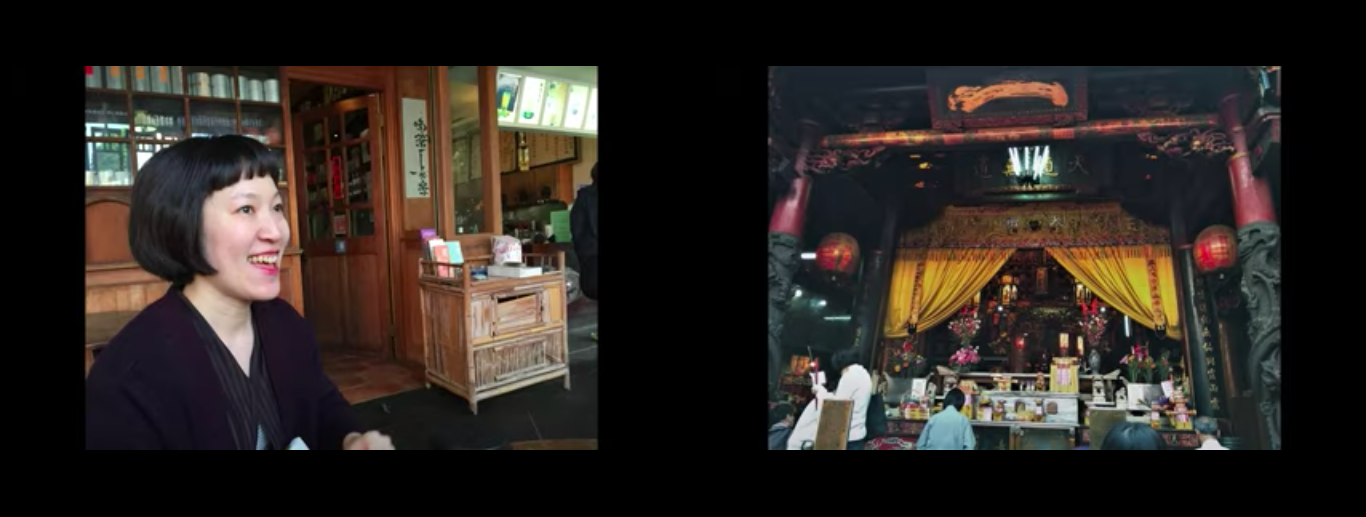
The multi-centeredness of the side-by-side setup gives voice to the guided as well as to the guide and invokes the exchange between foreigner and local. How does each view the same place differently? What makes a sight worth seeing and how does that differ between people? “Tourism”, as American author Lucy Lippard muses, “is too often discussed solely from the viewpoint of the visitors rather than the visited. Tourism imposes a disguise on locals, whether they like it or not.”⁵
The two-channel installation simultaneously displays two views, two perspectives and two ways of seeing the same world. Dean MacCannell has suggested that we cultivate “respect for the gap” between tourists and the toured – “a gap that can be narrowed but never closed.”⁶ This gap is depicted literally in the installation as the space between the two images. The thin strip of white wall, a zero-dimensional boundary, reflects the gap between the visitor and the visited, the local and the foreigner, the guest and host. Lee repositions the narratives experienced by each part as equally important, delineating hierarchy through horizontal representation.
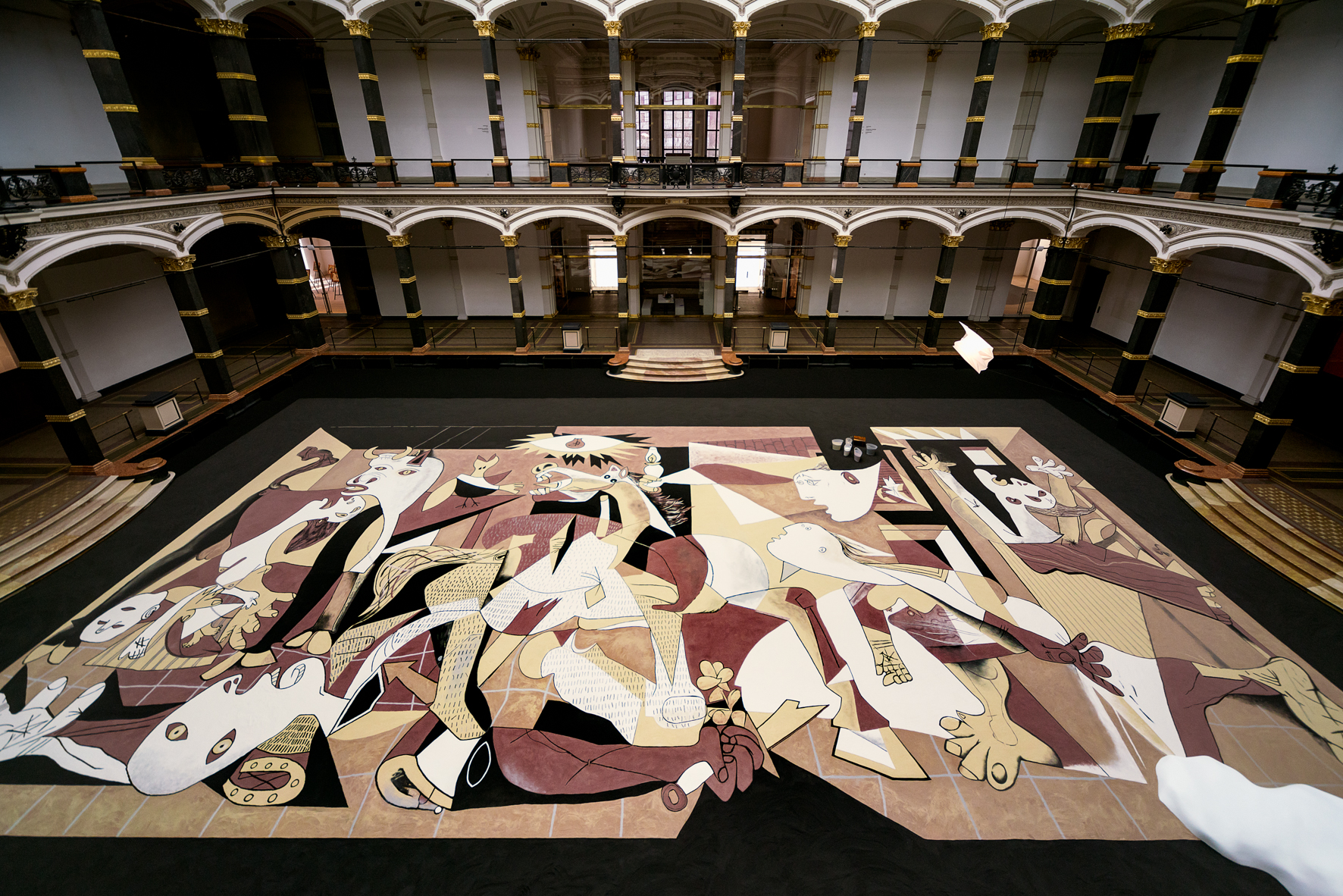
Under the exhibition’s title, the act of tour guiding becomes li, a gift or ritual. It takes on a new color, highlighting the coming-together of two different perspectives and worldviews within a performance enacted by both parties: an exchange. It is this shared experience of a place that makes it new for both participants.
Reconsidering normalized rituals of exchange is a common theme in Lee’s work as we see in The Dining Project (1997/2020), also on view in a revised format at Gropius Bau. Through the work, Lee asks whether “an art institution is capable of offering space for emotional connection”⁷ by inviting two strangers to dine together. Although the actual gathering couldn’t be performed, the artist adapted the work for online space, initiating a virtual tea time between the artist and one randomly chosen participant. In the same vein, The Sleeping Project (2000/2020) offers two strangers the chance to sleep together (in two separate beds) for the night. Inspired by an overnight train journey he undertook from Paris to Prague in which he shared a sleeping cabin with a Holocaust survivor, Lee constructs a situation and gives space for a new indeterminable experience between two people.
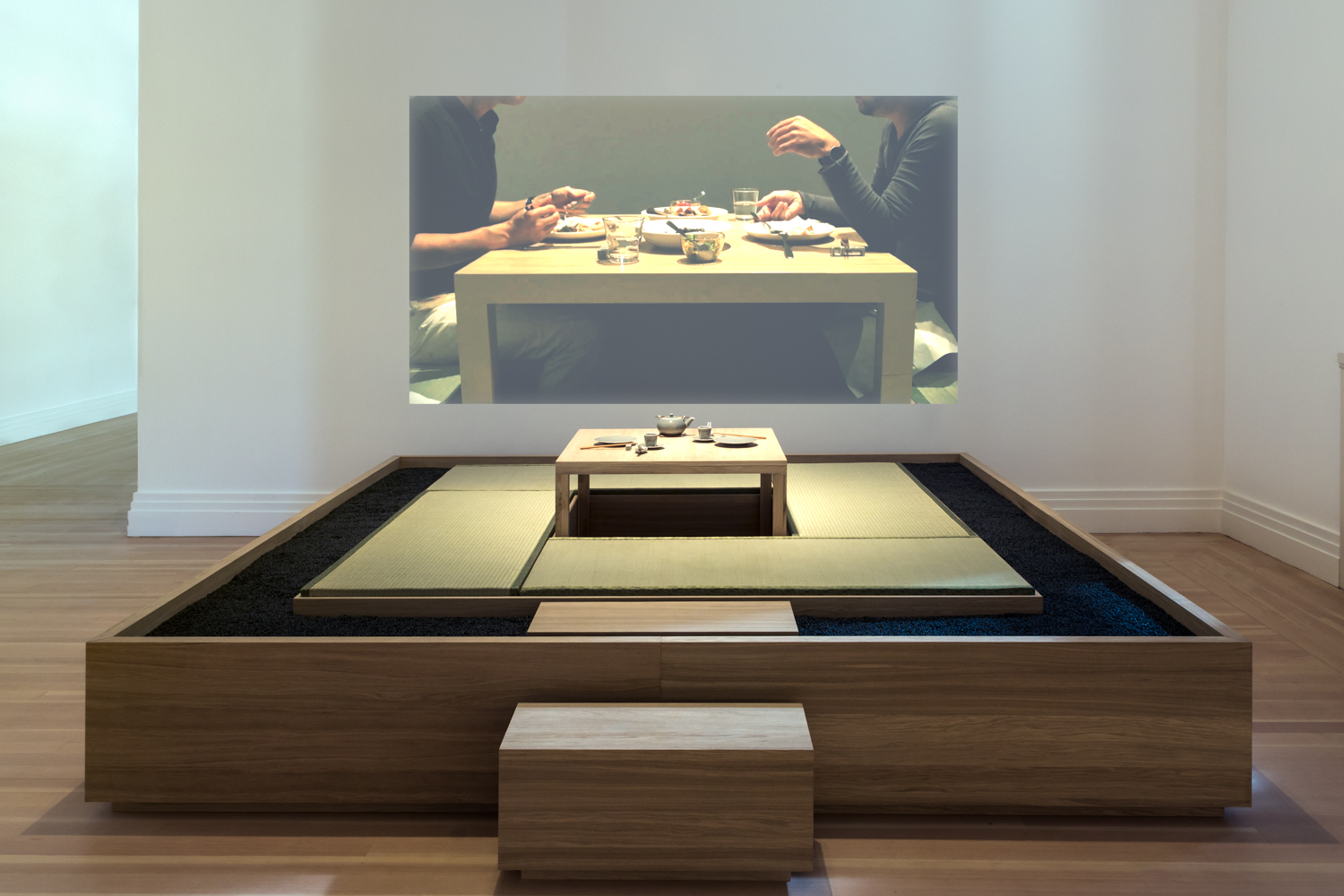
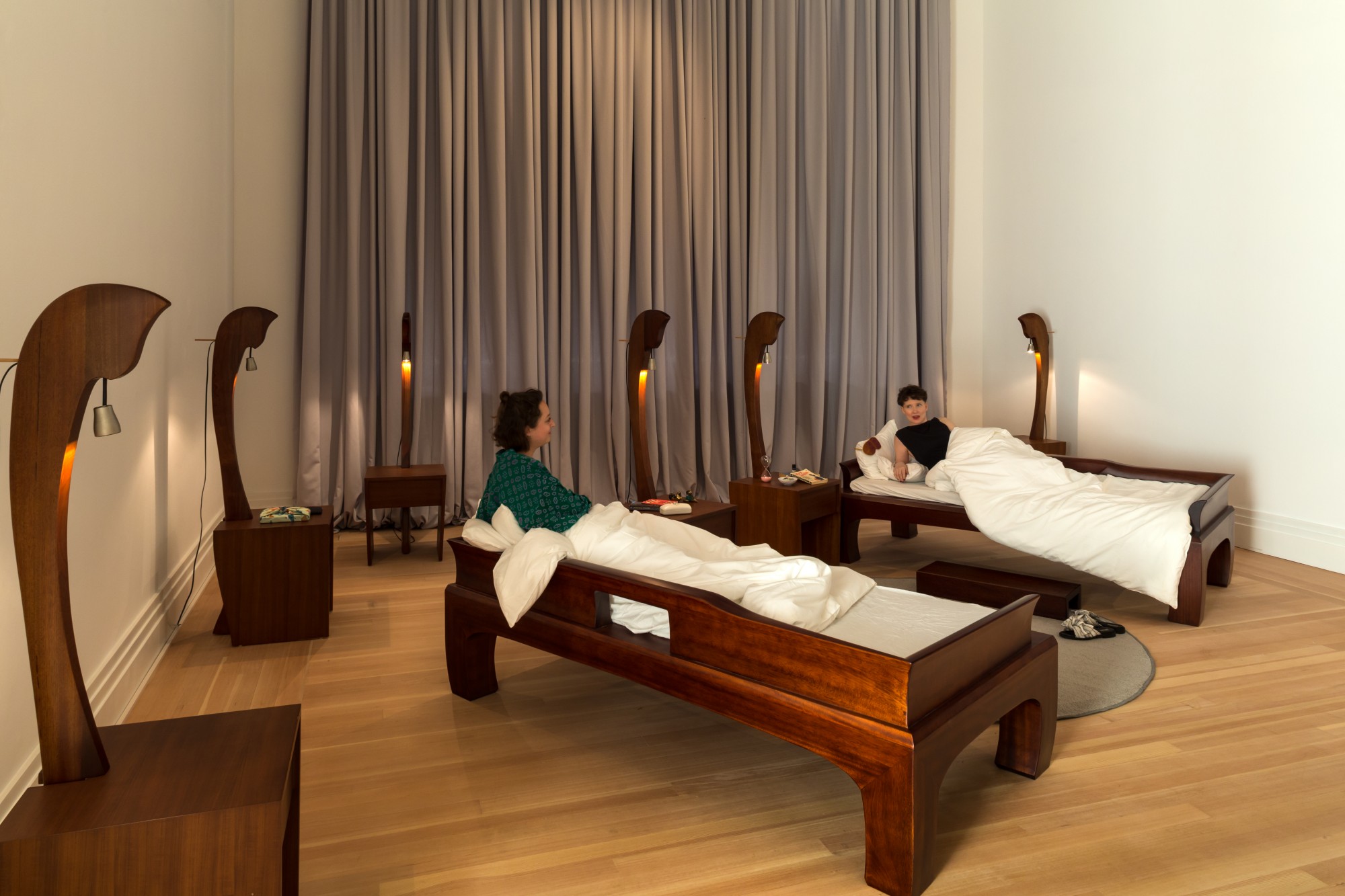
It is this experiential exchange between two people and cultures which Lee visualizes in The Tourist through an intimate and personal visual dialogue. While certain media outlets currently question whether the pandemic has sparked “the end of tourism”,⁸ these reflections are now more relevant than ever. Maybe the future of tourism is a ritual, a gift exchanged between two people. Maybe it’s the altering of perception that will truly revolutionize the tourism sector. Like the Situationists of the 60s, whose psychogeographical practice of the dérive aimed to subvert the capitalistic aims of urban planning, the pandemic could be the catalyst that alters and reshapes the very perceptions of our own surroundings. By reducing the tradition of tourism to its roots, we can find inspiration for a sustainable future model. Now is the time for imagining utopias, for rebuilding interrupted infrastructures and systems as we want them to be. The responsibility now lies with us for restructuring the world, and voices like Lee’s can inspire our direction.
禮 Li, Gifts and Rituals is on view at Gropius-Bau through July 12, 2020.
Text by Jared Marks
Notes:
¹ Encyclopaedia Brittanica, “Ren: Chinese Philosophy”, Accessed June 19, 2020
² Encyclopaedia Brittanica, “Li: Chinese Philosophy”, Accessed June 19, 2020
³ Kurtis Hagen, “Let’s Get Philosophical about Confucianism”, Accessed June 19, 2020
⁴ ⁸ Christopher de Bellaigue, “The End of Tourism?”, The Guardian Press, published June 18 2020
⁵ Lucy Lippard, “Imagine Being Here Now: Towards a Multicentered Exhibition Process”, published by The Falmouth Convention, Accessed June 19, 2020
⁶ Dean MacCannell, “The Tourist: A New Theory of the Leisure Class”, University of California Press, 1999
⁷ Berliner Festspiele, Accessed June 19, 2020
Header image: Photo by Matteo Carcelli, originally published in Gallery Magazine (Sep – Oct 2016), National Gallery of Victoria

